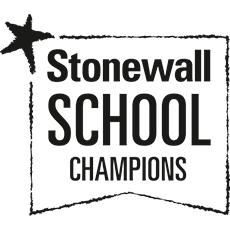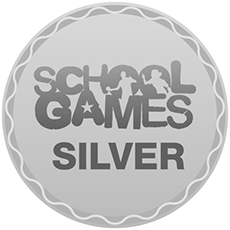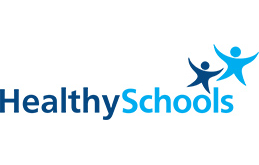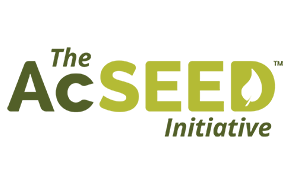Year End Targets
Year 1 Reading
I can use letter sounds to work out and read new words. (Word Reading)
I can say quickly the sound of all the letters and letter groups. (Word Reading)
I can read new words correctly by blending the letter and letter group sounds I have been taught. (Word Reading)
I can read many common exception words. (Word Reading)
I can read words made up of the letter sounds I know and which have endings -s, -es, -in, -ed, and -est. (Word Reading)
I can read words of more than one syllable using sounds that I have been taught. (Word Reading)
I can read words like I’m, I’ll and we’ll and understand that the apostrophe represents the missing letter or letters. (Word Reading)
I can read many words quickly and accurately without needing to sound and blend words I have seen before. (Word Reading)
I can read aloud books that use letters and letter groups I have been taught. (Word Reading)
I can use the sounds I know to re-read books more fluently and with more confidence. (Word Reading)
I can enjoy and understand a wide range of stories, poems and non-fiction text that I can’t yet read myself by hearing them read and talking about them with others. (Comprehension)
I can enjoy stories and texts that I can read for myself or have had read to me which link to things I have experienced. (Comprehension)
I can enjoy reading key stories, fairy stories and traditional tales because I know them well and and can retell them and comment on their special features. (Comprehension)
I can join in with words when I can guess what is coming next. (Comprehension)
I can enjoy and understand rhymes and poems, and can recite some by heart. (Comprehension)
I can explain the meaning of words that I know and I can talk about the meaning of new words, linking the meaning of new words to those I already know. (Comprehension)
I can use what I have already read or heard, or information a teacher has given me, to help me understand what I am reading. (Comprehension)
I can usually spot if a word has been read wrongly by following the sense of the text. (Comprehension)
I can talk about the title and events in books I have read or heard. (Comprehension)
I can say how the characters might feel in a story I have read or heard on the basis of what is said and done. (Comprehension)
I can say what might happen next in a story. (Comprehension)
I can take part in a group talk about what we have listened to. I take turns and listen to what others have to say. (Comprehension)
I can explain clearly my understanding of texts which have been read to me. (Comprehension)
Year 1 Writing
I can break down spoken words into their sounds and spell some correctly. (Spelling)
I can spell words containing each of the letter sounds I have been taught. (Spelling)
I can spell some common exception words. (Spelling)
I can spell the days of the week. (Spelling)
I can name the letters of the alphabet in order. (Spelling)
I can name the letters of the alphabet using letter names to distinguish between alternative spellings of the same sound. (Spelling)
I know the plural rule and can use -s and -es in the right place. (Spelling)
I can add un- to the start of a word to make a different word. (Spelling)
I can add -ing, -ed, -er and -est to the end of a word to make a new word e.g. helping, helped, helper, eating, quicker, quickest. (Spelling)
I can use simple spelling rules. (Spelling)
I can write the correct spellings in simple sentences I hear my teacher say. (Spelling)
I can sit correctly at a table, holding a pencil comfortably and correctly. (Handwriting)
I can write lower-case letters in the correct direction, starting and finishing in the right place. (Handwriting)
I can write capital letters. (Handwriting)
I can write numbers 0-9. (Handwriting)
I can see which letters belong to which handwriting ‘families’. (Handwriting)
I can write sentences by saying out loud what I am going to write about. (Composition)
I can write sentences on my own. (Composition)
I can join my sentences together to make a story. (Composition)
I can read my sentence and check that it makes sense. (Composition)
I can talk about my writing with my teacher or children in my class. (Composition)
I can read my sentence out loud so that children in my class can hear and understand me. (Composition)
I can add s or es to words to make them plurals e.g. dog, dogs; wish, wishes. (Vocabulary, Grammar and Punctuation)
I can add -ing and -er to the end of a word to make a new word e.g. helping, helper. (Vocabulary, Grammar and Punctuation)
I can show you how un- added to the beginning of a word can change its meaning. (Vocabulary, Grammar and Punctuation)
I can put words together to make sentences. (Vocabulary, Grammar and Punctuation)
I can use joining words like ‘and’. (Vocabulary, Grammar and Punctuation)
I can use spaces between words. (Vocabulary, Grammar and Punctuation)
I can use capital letters and full stops. (Vocabulary, Grammar and Punctuation)
I can use question marks and exclamation marks. (Vocabulary, Grammar and Punctuation)
I can use capital letters for names, places, the days of the week and the word ‘I’. (Vocabulary, Grammar and Punctuation)
I can explain what these words mean: letter, capital letter, word, singular, plural, sentence, punctuation, full stop, question mark, exclamation mark. (Vocabulary, Grammar and Punctuation)
Year 1 Maths
I can count to and past 100, forwards and backwards starting from any number. (Number and Place Value)
I can count and read numbers to 100 in numerals. (Number and Place Value)
I can count and write numbers to 100 in numerals. (Number and Place Value)
I can count in jumps of 2, 5 and 10s. (Number and Place Value)
I can identify one more and one less, given a starting number. (Number and Place Value)
I can find and show numbers using objects and pictures including number lines and use: equal to, more than, less than (fewer), most, least. (Number and Place Value)
I can read and write numbers from 1 to 20 in numbers. (Number and Place Value)
I can read and write numbers from 1 to 20 in words. (Number and Place Value)
I can use counting to solve problems with bigger numbers. (Number and Place Value)
I can partition and combine numbers using apparatus if I need it. (Number and Place Value)
I can read and understand number statements using +, ? and =. (Addition and Subtraction)
I can write number statements using +, ? and =. (Addition and Subtraction)
I can use number bonds up to 20. (Addition and Subtraction)
I can use subtraction facts up to 20. (Addition and Subtraction)
I can add one digit and two digit numbers to 20. (Addition and Subtraction)
I can subtract one digit and two digit numbers to 20. (Addition and Subtraction)
I can answer problems that use addition and subtraction, including missing number problems, using objects and pictures. (Addition and Subtraction)
I can answer multiplication questions using objects, pictures and other equipment. (Multiplication and Division)
I can answer division questions using objects, pictures and other equipment. (Multiplication and Division)
I can find and name 1/2 (half) of an object, shape or amount. (Fractions)
I can find and name 1/4 (quarter) as one of four equal parts of an object, shape or amount. (Fractions)
I can solve problems for length and height by telling which objects are longer or shorter/ taller or shorter. (Measurement)
I can solve problems for mass and weights by telling which objects are heavier or lighter. (Measurement)
I can solve problems for capacity and volume by telling if a container is empty, half full or full and if there is more in one container than another. (Measurement)
I can solve problems for time. I can tell if something is quicker or slower. I can tell if something happened earlier or later. (Measurement)
I can measure weight or mass and write these measurements down. (Measurement)
I can measure capacity or volume and write these measurements down. (Measurement)
I can measure time in hours, seconds or minutes and write these measurements down. (Measurement)
I can tell how much different coins or notes are worth. (Measurement)
I can tell when things happened by using these words: before, after, next, first, today, yesterday, tomorrow, morning, afternoon, evening. (Measurement)
I can talk about dates using the days of the week, weeks, months and years. (Measurement)
I can tell what the time is in hours and half past the hour. I can draw these on a clock face. (Measurement)
I can measure and begin to record length/height. (Measurement)
I can recognise and name common 2?D shapes such as rectangles, squares, circles and triangles. (Properties of Shape)
I can recognise and name common 3?D shapes such as cuboids, cubes, pyramids and spheres. (Properties of Shape)
I can talk about whole, half, quarter and three quarter turns. I can then use this to explain movement, direction and position. (Position and Direction)






